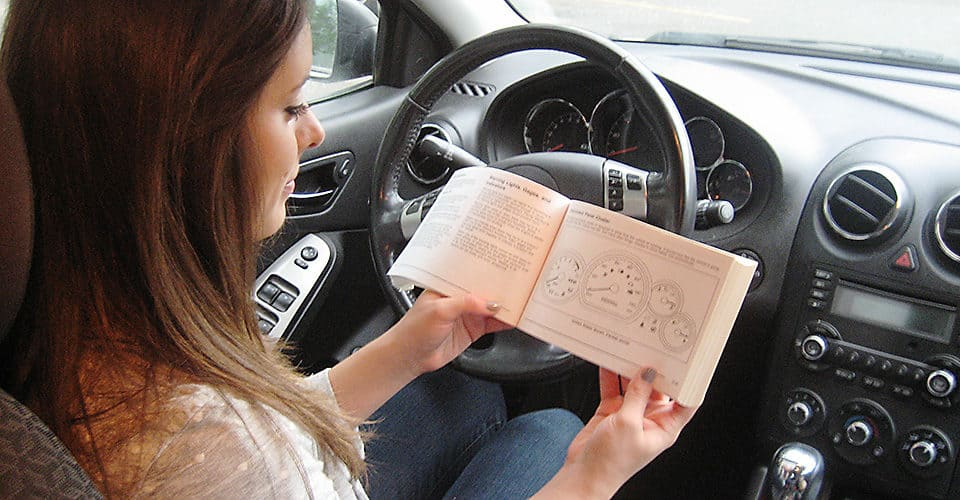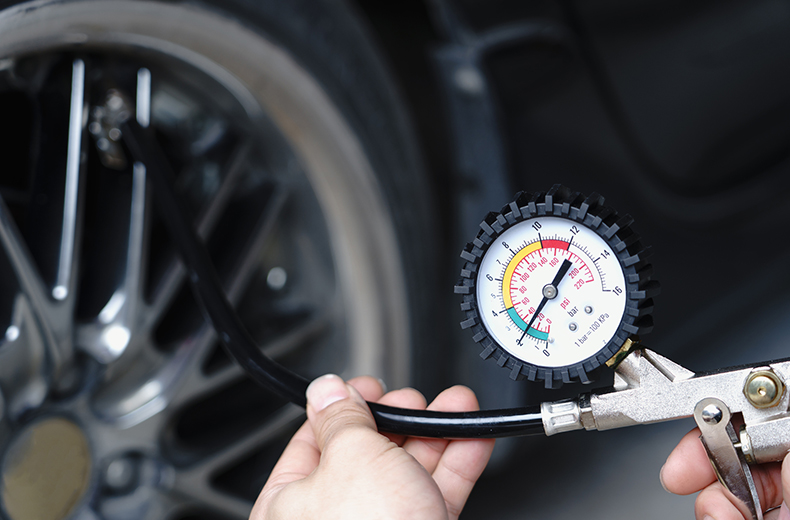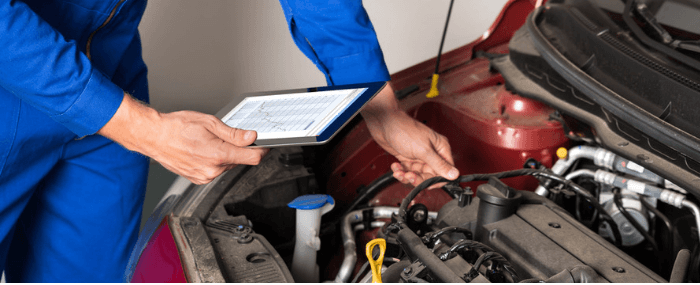Vehicle Maintenance
Essential Vehicle Maintenance Tips for Reliability and Longevity
Imagine driving down the road, enjoying the scenery, when suddenly your car starts showing signs of trouble. The engine sputters, the check engine light comes on, or worse, you find yourself stranded on the side of the road. A well-maintained vehicle can prevent such scenarios and keep you on the road worry-free. This blog post will provide you with essential vehicle maintenance tips to ensure the reliability and longevity of your car. From understanding your owner’s manual to the importance of regular check-ups, you’ll learn how to keep your vehicle in optimal condition and avoid costly repairs with proper vehicle maintenance.
Key Takeaways
- Understanding your vehicle’s owner’s manual is key to optimal performance and longevity.
- Regularly check motor oil, other fluids, car battery life, tire pressure/rotation/tread depth, engine air filter & cabin air filter for cleanliness & proper functioning. Brake pads/fluid levels for safety. Spark plugs & ignition system, transmission fluid and power steering fluid, windshield wipers for visibility.
- Preventative measures such as regular check ups are essential in avoiding breakdowns or costly repairs.
Understanding Your Vehicle’s Owner’s Manual

The vehicle owner’s manual is a comprehensive resource for car maintenance advice, loaded with information to ensure your vehicle operates effectively. Yet, many people overlook the importance of this essential guide. The manual provides guidance on:
- Recommended services
- The appropriate oil and fuel to use
- Diagnosing issues
- Effectively utilizing the vehicle’s infotainment system
It serves as your very own car maintenance checklist!
Following the vehicle maintenance guidelines from the owner’s manual can prolong your car’s lifespan and increase its resale value. Also, your driving habits can significantly affect car maintenance. Here are some basic car maintenance tips to keep in mind:
- Avoid accelerating quickly
- Brake gradually and avoid abrupt stops
- Avoid jerking the steering wheel
- Regularly check and maintain fluid levels (oil, coolant, brake fluid, etc.)
- Keep tires properly inflated and check for wear
- Replace windshield wipers regularly
- Clean and wax your car regularly to protect the paint
- Schedule regular maintenance and inspections
By following proper vehicle maintenance tips, you can ensure that your vehicle stays in good shape.
Motor Oil Matters: Ensuring Engine Health
Motor oil, also known as engine oil, acts as the engine’s lubricant. Consistent oil changes, using the appropriate oil type, and checking oil levels are key to sustaining a well-functioning engine and avoiding extensive damage. You should check oil and coolant levels monthly, or every few times you refill your gas, especially before any long road trips. If the check engine light illuminates, you need to attend to the problem immediately.
The owner’s manual should provide instructions on your engine’s viscosity and the average mileage per oil change. For cars using conventional motor oil, it’s generally recommended to change it every 3,000 miles or three months. For those using synthetic oil, it’s suggested to change it every 5,000-10,000 miles or six to twelve months. Remember, other fluids such as:
- brake fluid
- transmission fluid
- coolant
- windshield washer fluid
- power steering fluid
- differential gear oil
- transferase oil
Car insurance must also be considered when planning your regular car maintenance routine, as proper maintenance can help you avoid potential issues that could affect your coverage.
Maintaining Car Battery Life
The car’s battery significantly affects its overall performance. Keeping the battery in good condition helps prevent sudden breakdowns and ensures your car operates reliably. To assess your car battery’s condition, inspect it while the hood is open. If you notice corrosion on the contacts, clean them with a battery cleaning brush to ensure optimal performance.
Watch out for cracks or leaking fluid (acid) in your car battery. These signs indicate that it’s time for a replacement. To ensure the longevity of a car battery when not in use, connect it to a trickle charger or battery tender with an automatic shut-off feature or float mode. This will protect your battery and keep it in good shape.
Tire Care: Pressure, Rotation, and Tread Depth

Appropriate tire care is vital for safety and fuel efficiency. One key aspect of tire care is maintaining proper tire pressure. To determine tire pressure without a tire pressure sensor, follow these steps:
- Purchase a tire gauge.
- Routinely inspect the pressure of your tires using the tire gauge.
- Refer to your owner’s manual for information on the recommended tire pressure for your specific vehicle.
Tire rotation should be conducted every 5,000 to 8,000 miles to ensure even wear on all tires. Keep an eye on tire tread depth as well. The penny test is a simple way to assess the condition of your tires:
- Insert a penny into the tread of the tires.
- If Lincoln’s full head is visible, it’s likely time to replace your tires.
- Tire wear can still be used if only a part of the head is visible. However, this can indicate that your tires need to be replaced soon.
Filters: Engine Air Filter and Cabin Air Filter

Engine air filters and cabin air filters serve important functions in safeguarding your engine and preserving air quality inside your vehicle. The engine air filter safeguards your engine by filtering out debris and contaminants, while the cabin air filter ensures clean air circulates within the passenger compartment.
To determine if your engine air filter needs replacement, hold it up to a light source. If no light passes through, it’s time to replace the filter. A cabin air filter may need replacement if there’s an unusual or malodorous smell in the cabin, particularly when the heat or air conditioning is engaged.
Maintaining clean filters not only protects your engine but also improves fuel efficiency.
Brake System Maintenance: Pads, Fluid, and Warning Signs
Brake system maintenance is key for vehicle safety. Regularly inspecting your brake pads, verifying fluid levels, and being aware of potential warning signs can help prevent accidents and costly repairs. Some common auditory indicators that brake maintenance or repair is necessary include:
- Squealing
- Grinding
- Rattling
- Intermittent noises
If your brake pads are worn and require replacement, you may hear a squeaking or even metal grinding noise. Staying on top of brake system maintenance can save you money in the long run, as it helps avoid the need to replace more costly components like rotors.
Spark Plugs and Ignition System
Spark plugs are integral to your car’s ignition system as they ignite the gas and air mixture in the engine for peak performance. To determine if a spark plug requires replacement, inspect the electrode and tip. If they appear darkened by engine residue, it’s time to either clean or replace the spark plug.
It’s recommended to replace faulty spark plugs according to vehicle manufacturer recommendations or when an observable decrease in engine power is experienced. By ensuring that your spark plugs are clean and functioning properly, you’re helping your engine run more efficiently and preventing potential issues down the road.
Transmission Fluid and Power Steering Fluid
Keeping track of and regulating transmission fluid and power steering fluid levels are crucial for seamless operation and avoiding expensive repairs. Transmission fluid serves as a lubricant that helps keep the components inside the transmission in optimal condition. It’s crucial to inspect and replace the transmission fluid when necessary to avoid expensive transmission damage or replacement.
Indications of low or deficient transmission fluid include:
- a burning odor
- difficulty in shifting gears
- peculiar noises during gear shifts
- transmission overheating
Most car manufacturers suggest replacing the transmission fluid every 30,000 to 60,000 miles. By keeping an eye on these fluid levels, you’re ensuring a smoother ride and prolonging the life of your vehicle’s transmission and power steering systems.
Windshield Wipers and Visibility

Operational windshield wipers are imperative for maintaining visibility and safety, particularly during poor weather conditions. To assess the condition of your windshield wipers, simply examine them while your hood is open. If the rubber on the wiper blades appears worn or damaged, it’s time for a replacement.
Before replacing your windshield wipers, try cleaning the rubber with a washcloth to see if that improves their performance. However, if cleaning doesn’t help, it’s best to replace them. Windshield wipers should be replaced approximately once a year or when their effectiveness is diminished. By ensuring proper windshield wiper functionality, you’re taking a proactive step in maintaining visibility and safety on the road.
Cooling System: Radiator Coolant and Thermostat
Keeping your vehicle’s cooling system in good condition is vital to avoid costly repairs and guarantee optimal engine performance. To verify your coolant level, inspect the transparent refill container located nearby. It’s important to use a 50/50 mix of antifreeze to water, as suggested by most manufacturers.
Regularly flushing your coolant system helps eliminate contaminants and guarantees that your radiator is filled to the appropriate level. Keep in mind that it’s inadvisable to remove the radiator cap to check coolant levels, as this poses a risk of scalding. By regularly checking and maintaining your cooling system, you’re taking care of your engine and ensuring a smooth ride.
Preventative Measures: Regular Check-Ups and Early Detection

The secret to prolonging your vehicle’s lifespan and averting sudden breakdowns lies in regular check-ups, preventive maintenance, and early detection of possible issues. Inspecting your car on a regular basis can help you spot exterior issues that need attention, such as tire pressure, cracks in the windshield, or chipped paint.
Adhering to a car maintenance schedule as outlined in your owner’s manual can help prolong the life of your vehicle and protect against breakdowns, costly repairs, and other unexpected issues. By following these car maintenance tips and performing regular maintenance, you’re investing in the longevity and reliability of your vehicle.
Summary
In conclusion, proper vehicle maintenance is essential to keep your car running efficiently and safely on the road. From understanding your owner’s manual to performing regular check-ups and addressing potential issues early on, you can extend the life of your vehicle and maintain its resale value. By following these car maintenance tips, you’re investing in the future of your vehicle and ensuring a worry-free driving experience.
Don’t wait for problems to arise. Be proactive in maintaining your vehicle, and you’ll enjoy the benefits of a reliable and efficient car for years to come. Remember, a well-maintained vehicle is a safe and dependable one.
Frequently Asked Questions
What is the basic maintenance of a vehicle?
Basic car maintenance involves checking and replacing parts such as spark plugs, wires, fluids, and serpentine belts on a regular basis. It is recommended to schedule these maintenance services through a dealer for access to genuine parts and expert customer care.
What is the recommended maintenance schedule for a car?
It is recommended to perform essential preventative maintenance every 30,000 miles, as part of a 30-60-90 interval. However, as each vehicle is unique, various parts may require replacing at irregular intervals based on driving habits.
What is the meaning of maintenance in automotive?
Maintenance in automotive refers to the regular checking and repairing of a vehicle to ensure it is kept in good condition. It is a necessary process to ensure safe and efficient driving.
How often should I check my vehicle’s oil and coolant levels?
It is advised to check your vehicle’s oil and coolant levels on a monthly basis, or every few gas fill-ups, and particularly prior to any extended road journeys.
We are an approved AAA Auto Repair facility and a NAPA Auto Care Center.